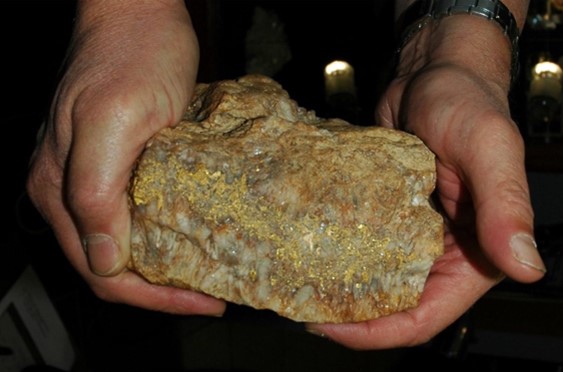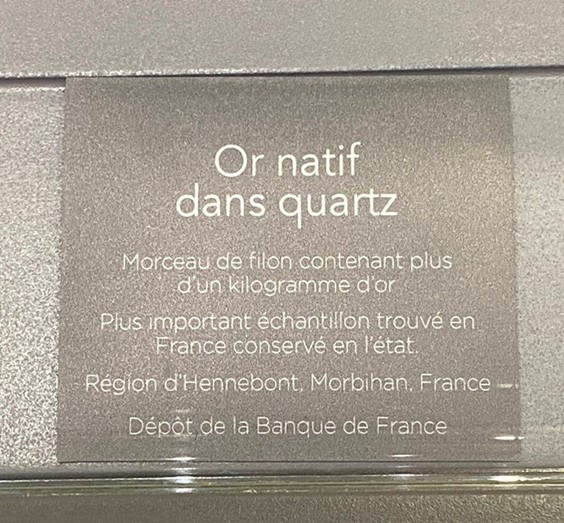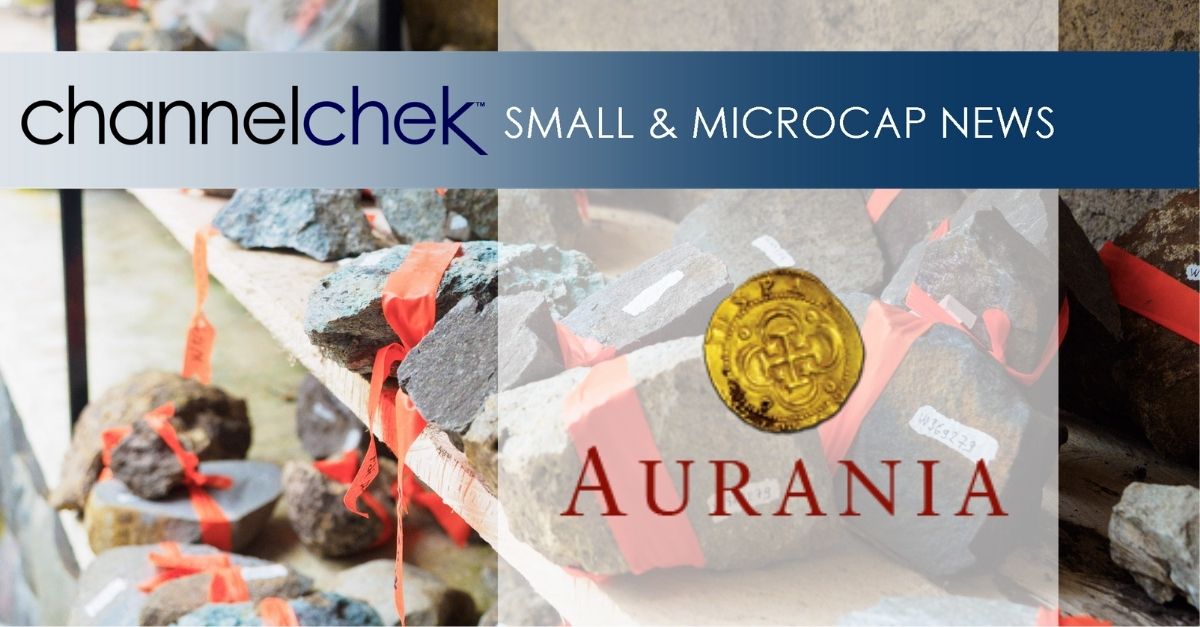
Research News and Market Data on AUAIF
Aurania Resources Ltd. (TSXV: ARU; OTCQB: AUIAF; Frankfurt: 20Q) (“Aurania” or the “Company”) is pleased to announce it has applied for an exploration license in the Brittany Peninsula of northwestern France through a wholly-owned French subsidiary. The concession area, which includes Hennebont in the Morbihan Department, has historically been the site of significant high-grade gold finds. Placer gold in streams is present in the vicinity of the area.
In December 2022, a very large and high-grade gold specimen was displayed at the Muséum National d’Histoire Naturelle (Natural History Museum) in Paris, France. Museum staff estimates this sample of 3.31 kilograms weight to contain one kilo of gold; it is considered the highest-grade gold sample currently known in France (Figure 1). It consists of vuggy coarse white quartz and native gold. Gold within the vugs is crystalline in nature (Figure 2). The sample is displayed next to a dendritic crystalline gold sample from the same locality (Figures 3 and 4).

Figure 1: High-grade gold specimen in the Natural History Museum, Paris, estimated to contain one kilogram of gold.

Figure 2: Vug in the quartz vein sample, approximately one centimetre across, containing drusy quartz and crystalline native gold.

Figure 3: Gold sample displayed next to a dendritic crystalline gold sample from the same locality.

Figure 4: Description of gold sample at the Natural History Museum in Paris. “Native gold in quartz vein, piece of vein containing more than 1 kilogram of gold, largest sample found in France kept as is, Bank of France deposit (loan)”.
Aurania’s team became aware of the sample last year and approached the museum staff as to its origins and provenance. We were told the samples were purchased by the Banque de France and were on loan to the Museum and that they supposedly came from an old collection. Museum staff supplied us with an article from the Journal du Morbihan, a newspaper dated August 13, 1875 and entitled “Le quartz aurifere dans le Morbihan”, and an extract from a book published by L’Abbe Henry Breuil, described in Wikipedia as a “French Catholic priest, archaeologist, anthropologist, ethnologist and geologist” and one of the principal early investigators of the cave paintings at Lascaux. Breuil examined a sample weighing 1,400 grams “with a little adhering quartz” that was found in 1875 and acquired by a jeweller. The son of the jeweller said his father had also purchased a nugget of 800 grams at the same time. The newspaper article said that two pieces of auriferous quartz were discovered by road builders 400 metres apart and that one was broken into a piece weighing 117 grams and a piece weighing about 900 grams. A third piece of 1,470 grams was found separately and purchased by the jeweller. The description continued, “These ores are gold-bearing quartz, very rich in gold, even excessively so. This gold is not compact, it is crystalline.”
Aurania’s President and CEO, Dr. Keith Barron met with a collector who wishes to remain anonymous, at the Sainte-Marie-aux-Mines mineral show in Alsace in June 2023, who allowed him to examine a one-kilogram specimen of quartz vein material with abundant gold that he claims comes from the same locality in France. The sample (see Figure 5) closely resembles the museum sample and given the estimated grade of 46% gold (460,000 g/t, or 13,416 oz/ton Au) it is almost certainly from the same locality.

Figure 5: Photo of a new gold-bearing quartz sample shown to Keith Barron by a collector and presumably coming from the same area.
A visit to the locality in December 2022 showed abundant quartz vein material on surface and evidence of past mining activity. Part of the site contains deep water filled pits and trenches that were presumably dug in the 19th century. Growth of moss on the quartz rocks is considered “luxuriant” and there is no evidence of modern prospecting or mining activity in the area. There has been no glaciation at the site and so the quartz vein material at surface is more or less “in situ”.
Update on Ecuador
On July 31st, Dr. Barron will meet with Mines Minister of Ecuador, Sr. Fernando Santos to discuss the potential “work around” mentioned in the Company’s press release dated June 19, 2023, to recover part or all of the former “Reserved Areas” that were initially applied for in 2016, and contain a large number of discrete magnetic, porphyry type targets.
At the same time, and in tandem with its exploration project and activities in Ecuador, the Company is excited to actively pursue this extraordinary new gold exploration opportunity in Brittany, France, mentioned above.
Qualified Person
The geological information contained in this news release has been verified and approved by Jean-Paul Pallier, MSc., Vice-President Exploration of the Company. Mr. Pallier is a designated EurGeol by the European Federation of Geologists and a Qualified Person as defined by National Instrument 43-101, Standards of Disclosure for Mineral Projects of the Canadian Securities Administrators.
About Aurania
Aurania is a mineral exploration company engaged in the identification, evaluation, acquisition and exploration of mineral property interests, with a focus on precious metals and copper in South America. Its flagship asset, The Lost Cities – Cutucú Project, is located in the Jurassic Metallogenic Belt in the eastern foothills of the Andes mountain range of southeastern Ecuador.
Click here to view the full press release dated July 24, 2023 on our website including contact details and forward-looking statements.
